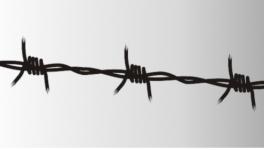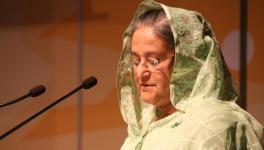Bangladesh: Understanding the Quota Reformation Protests by Students, Youth

Image Credit: The Leaflet
“If not the descendants of the freedom fighters, will the successors of the traitors bask in opportunities?” remarked Bangladesh’s Prime Minister Sheikh Hasina in response to the quota-reformation protests.
The remark threateningly hints at the political future of the nation and the State’s role in concretising the segregation of the deserving majority and the undeserving Other.
The nation came to be because of the martyrs in the freedom struggle, she seemed to be saying, hence, it rightfully belongs to the kins they are survived by. One has either to ally with or belong to the family of the freedom fighters to be recognised by the State, or risk being relegated to the fate of traitors.
Hasina, the daughter of the founding father and the first President of Bangladesh, Sheikh Mujibur Rahman, first came to power in 1996, was the Leader of the Opposition from 2001 until she returned to form the government in 2009 and has been the longest-serving Prime Minister of the nation since then.
Whenever Bangladesh has had elections, the history of the Liberation War has played an important part in them. Time and again, Hasina has used it as an election plank that the nation is in the safe hands of the daughter who birthed it.
In nations such as Bangladesh, India, Nepal and Pakistan, where extreme inequality is prevalent, affirmative action is a crucial tool to address these disparities.
However, its effectiveness is contingent on whether it benefits the socio-economically and historically marginalised groups and communities. This is why the youth and students, including young schoolgoers, have taken to the streets in large numbers, demanding a reformation of the reservation system.
Timeline of the ‘quota’ reforms in Bangladesh
After independence and in 1972, quotas or reservations in government jobs and civil services were introduced for specific communities: 30 percent for freedom fighters and their descendants, 10 percent for women, 10 percent for people from ‘backward’ districts, 5 percent for ethnic minorities and 1 percent for people with disabilities.
In October 2018, following protests led by job-seekers and students demanding reforms in the quota system, the reservations were wholly abolished, notwithstanding the differing groups and their current socio-economic standing.
The High Court of Bangladesh recently passed a judgment, reinstating the 30 percent reservation for the successors of the freedom fighters, while everything else remains unchanged.
This led to large-scale but peaceful protests by students and youth since the first week of July, which were met with violence inflicted by armed forces following a clash with the members of the pro-government student and youth political group, Bangladesh Chhatra League.
The police forces deployed by the government charged the protestors with batons, fired tear gas and even fired bullets at them. Nineteen deaths have been reported till now, including the deaths of a seventeen-year-old and a fifteen-year-old who succumbed to shotgun injuries, as well as of a journalist who was covering the protests. Many more have been injured.
Reportedly, a number of women protestors seeking medical help have multiple pellet wounds. The second phase of demonstrations on July 18, which witnessed the most killings and police brutality, was followed by a nationwide internet shutdown.
Campuses have been turned into slaughterhouses and streets into warzones, reliving the horrors of 1971. The attempts to paint the protests as ‘anti-national’ or led by ‘traitors’ (razakars) and the tactics employed to quell them, mirror similar authoritarian tendencies executed by Bangladesh’s neighbouring India under the rule of the Bharatiya Janata Party, where dissenting scholars, students, journalists and civil society activists critical of the government’s policies have been labelled as anti-national.
The Bangladesh government’s hyper-nationalistic tendencies perpetuating differential and exclusionary forms of citizenship, favouring the descendants of the people who partook in the Liberation War and loyalty towards them as a mark of nationalism and patriotism is a translation and continuation of the BJP-ruled India’s attempts to transform the Indian nation into an abode solely of and for the Hindus, or Hindu Rashtra.
Inequalities among various socio-economic groups in Bangladesh and the need for reforms
The remarks of Prime Minister Hasina weigh heavily on the ethnic minority groups populating the Bihari refugee camps and colonies in urban Bangladesh. The population in these colonies comprises vastly of Urdu-speaking Muslims believed to be immigrants from the North Indian states of Uttar Pradesh and Bihar who had migrated to East Pakistan (now Bangladesh) in 1947, and are vulnerable to social and economic discrimination that stems from their identities of being successors of the ones accused of collaborating with Pakistan during the Liberation War, the ‘razakars’.
It was only in 2008 that these previously Stateless communities were granted their citizenship, and yet things have hardly changed. They live in congested neighbourhoods, far from human conditions, sharing common washrooms with scores of other families and being kept away from civil society.
In many instances, they often have to hide their real identities for fear of being discriminated against and looked down upon. There is no concrete evidence of their exact population. Efforts to research their socio-economic conditions are also lacking, considering they have negligible representation in bureaucratic and policy-framing platforms.
It is also difficult to claim that the Bihari Muslims of Bangladesh belong to the historically marginalised caste groups, provided that caste-based stratification has seldom been attributed to the Muslim communities in South Asia and, again, because of marginal initiatives at mainstreaming of these groups in the country.
However, caste-based discrimination and Untouchability are persisting social issues plaguing contemporary Bangladeshi society. At present, only 10 percent Bangladeshi population is Hindus, with a large proportion of them belonging to oppressed caste groups.
They assume their clan names from the work that they do and are engaged in informal economic activities such as tanning of leather (Rishi and Muchi), sweeping (Horijon), sanitation work and cleaning (Balmiki) and funeral work (Dom).
Often referred to as communities discriminated against based on their work and descent, they comprise most of the Dalit (occupying the lowest rung in the caste-based hierarchical arrangement) population in Bangladesh. According to the International Dalit Solidarity Network (IDSN), an estimated 6.5 million Dalits live in Bangladesh.
A study concluded that while the majority (78.8 percent) of the Dalit population is Hindu, 19 percent of them identify as Muslims, and the rest of them come from Christian and Buddhist religious minority groups.
A report by the Global Forum for Communities Discriminated based on Work and Descent claims that only 48 percent of Dalit men and 39 percent of Dalit women identify as literate as against Bangladesh’s national literacy rate of 74.66 percent.
They have also been denied entry to school premises and other political and bureaucratic institutions, with news of violence perpetrated against them if they try to enter such spaces.
Treated as outcasts, living in cramped settlements often close to or amid filth-filled dumping yards and denied entry into the middle-class urban neighbourhoods lest they pollute those spaces, they are more prone to malnutrition resulting from acute food shortages and endemic diseases such as malaria and dengue.
While non-governmental organisations have taken initiatives to impart education and provide free healthcare, such initiatives have hardly been proven transformative in the absence of structural and institutional interventions.
Along with Dalits and the Bihari Muslims, hill-dwelling ethnic minorities and indigenous groups such as the Chakmas, Khasis and Monipuris, who primarily work at tea plantations, are also socio-economically far behind the average population of the nation.
The lack of laws and measures ensuring the protection of these groups and no welfare policies directed at them have reduced them to second-class citizens with negligible rights. The lack of concrete data on these groups and communities only augments their hardship.
While the situation of women in Bangladesh has improved compared to the previous decades, it is far from the achievable mark. The wage disparity between men and women has decreased, and the increased rate of women’s employment in formal and government sectors is mainly limited to the middle and upper-middle classes.
Most women from socio-economically marginalised sections work as informal labourers in sweatshops and garment factories with negligible wages, no employment benefits and insurance, and in hazardous environments.
All of these groups have been excluded from the affirmative quotas.
Current scenario and the way forward
The protestors claim that their protest is against the considerable percentage of reservations secured for the surviving kin of freedom fighters. What they want is the quota reformation that benefits communities long excluded from welfare measures rather than the complete abolition of it.
Hence, one must be careful before tagging them as essentially anti-quota. It is at this juncture that various human rights groups and civil society organisations working with and for the benefit of the marginalised majority should come forward and join the protestors in pressing for their demands to be met and for necessary and long-due structural changes.
The movement requires organised leadership so that it can be sustained and structural transformations can be steered. The lackadaisical left-leaning, socialist and communist political organisations in Bangladesh need to make efforts to wake up from their deep slumber to make themselves visible.
Initiatives must be taken to bring people concerned about human rights and the marginalised in alliance with each other. In an ideal scenario, the opposing political parties should have come up with a comprehensive list of demands drawn from the initially prevalent system of reservation, prioritising gender and ethnic minorities and people with disability and claiming special reservations for the historically marginalised caste groups and Bihari Muslims.
If not anything, that would have and still can spearhead discourses on uplifting these groups, mitigating the unjust violence perpetrated against them and the need to make necessary and immediate legal amendments.
The protest against the unjust reservation and for meritorious recruitment is commendable, and the response it has garnered is agitating, but one must not forget that a severely plagued system has kept scores of people from climbing the conventional ladders of meritocracy for generations.
The quota system, therefore, needs reform, not abolition, and the protestors have firmly maintained their stance on it. Hopefully, the movement led by students and youth who dream of a just and equal world will emerge victorious against the exclusionary and repressive police state.
The writer is an incoming PhD student at the Department of Sociology and Social Anthropology at Central European University. The views are personal.
Courtesy: The Leaflet
Get the latest reports & analysis with people's perspective on Protests, movements & deep analytical videos, discussions of the current affairs in your Telegram app. Subscribe to NewsClick's Telegram channel & get Real-Time updates on stories, as they get published on our website.
























